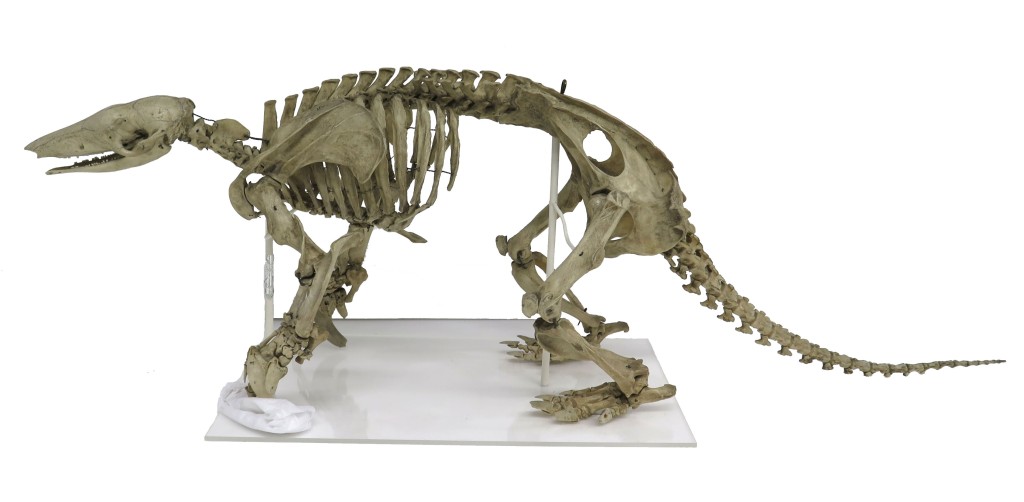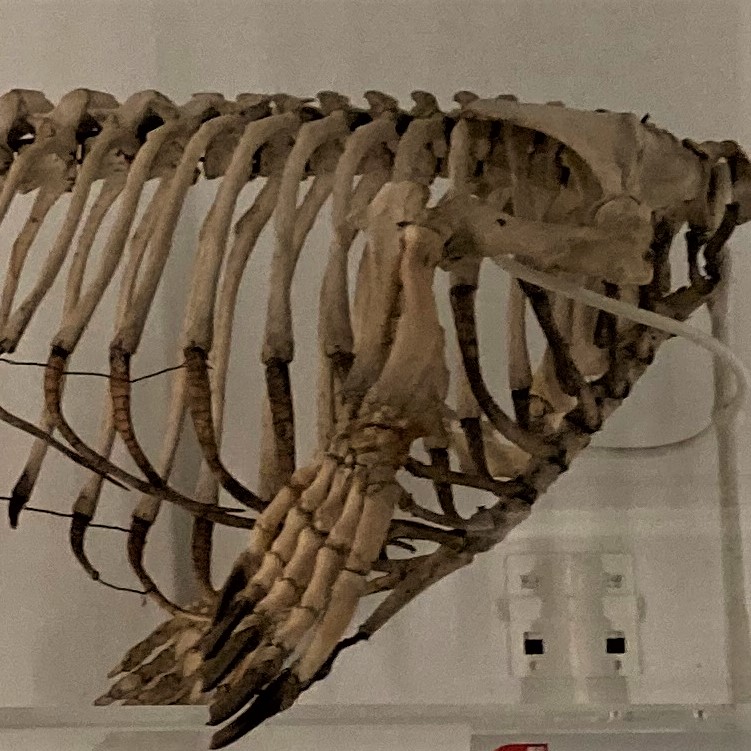
Last month in Nature Classroom we went on a guided tour of the skeleton, looking at the all the different bits and what they do. Today we are going to focus in on the arms and legs. Why? We can tell a lot about the animals they belong to, the way they move and sometimes even the way they eat when we look at the limbs. We will just be looking at animals with an internal skeleton made out of bone in this post – animals with a skeleton on the outside will feature in a later one.
These activities support learning in the following areas:

Identify that humans and some other animals have skeletons and muscles for support, protection and movement
Recognise that some mechanisms, including levers, pulleys and gears, allow a smaller force to have a greater effect
Identify how animals are adapted to suit their environment in different ways
Limbs as Levers
One way we can understand how limbs work is by thinking of them as levers. Let’s imagine a seesaw. For a seesaw we need a long piece of wood (the lever) and a support around which the seesaw moves (the fulcrum or pivot point). If you have two animals that are the same weight, and the distance between the fulcrum and the end of the seesaw where each animal sits is the same, you will get a nice balance.

You can guess what happens if one of the animals weighs more than the other – it takes the seesaw out of balance.

But what if you change the positions of the animals? Bring one of the animals closer to the fulcrum, and they will be easier to lift – they may stay in the air while the animal on the other side of the seesaw stays on the ground. Why is that?

Think about the weight of the animal as the force being put into the lever, and the distance from the fulcrum as the length of the lever arm. We can then work out what will happen at the other end of the seesaw.

The seesaw balances when Animal 1 x Distance 1 = Animal 2 x Distance 2. Decrease the distance of an animal from the fulcrum, you need to increase its weight to get the seesaw to balance. Increase the distance from the fulcrum, you need to decrease the weight.


How does all of this link to our understanding of the way legs work? Well, our arms and legs can be thought of as levers. Instead of seesaw supports you have joints, and instead of the weight of animals providing the force, you have muscles. Have a look at your elbow. Can you feel (gently!) a lump of bone behind your elbow? This is called (long name coming up…) the olecranon process of the ulna (a process is the name we give to a bit of bone that sticks out, and the ulna is one of the bones of your forearm). Here the triceps muscle attach – try straightening your arm out and you might feel the triceps on the back of your upper arm. We are going to look at how the shapes and lengths of the bones of the arm/foreleg are different in different mammals, and how that makes them better suited to their way of life.

Task: Make your own models of digging and running limbs
- Download our Limb Models sheet and print out on a piece of paper or thin card. Or you can draw your limb skeletons freehand if you like, making sure the part of the limb in front of the elbow is the same length in both but the bit of the ulna behind the elbow is different in length.
- Follow the instructions on the sheet to cut out the limb and attach it together so that you can rotate it around a point.
- You are now set to do some experiments. Try pretending to be the triceps muscle, pulling up on the olecranon process of the ulna (the bit that sticks out behind the elbow). Try pulling it up the same distance on each of the limbs – what happens at the foot end?
The limbs in our Limb Models sheet belong to two very different animals with very different lifestyles. We have the cheetah, known for running really fast, and a giant armadillo, using its forelegs to dig. The cheetah has a really long leg but short olecranon process. This means that it can get a lot of movement through the foot, helping it to run quickly. The armadillo has an olecranon process that looks like it is almost as long as the forearm. This means that the muscle is attaching further away from the elbow (the fulcrum), which means that it can create more force at the foot – just as moving the mouse further from the fulcrum of the seesaw makes it easier for it to keep the other mouse in the air. Lots of force at the foot is important if you are digging all the time.

Armadillo skeleton 
Cheetah skeleton
You can see how these limbs are adapted to the lifestyles of these animals – you can find out more about what adaptations are and how evolution works in our post exploring evolution and animal colour. What other adaptations to you think might be helpful for the limbs of running or digging animals?
Other Limb Adaptations
Digging and running are not the only limb adaptations we see in mammals.

Task: Guess the Animal from its Limbs
Play our matching game and see if you can match the limbs to the animal, then download the answer sheet for more information about them!


Colugo 

Kangaroo (c) Laurie Boyle CC BY-SA 2.0 

Aye-aye 

Ringed Seal. (c) Ray Muzyka CC BY-NC-SA 2.0 

Dolphin (c) Jolene Thompson CC BY 2.0




One thought on “Skeletons: Arms and Legs”